You have an Azure subscription that contains an Azure Synapse Analytics dedicated SQL pool named SQLPool1.
SQLPool1 is currently paused.
You need to restore the current state of SQLPool1 to a new SQL pool.
What should you do first?
You have an Azure data factory that is configured to use a Git repository for source control as shown in the following exhibit.
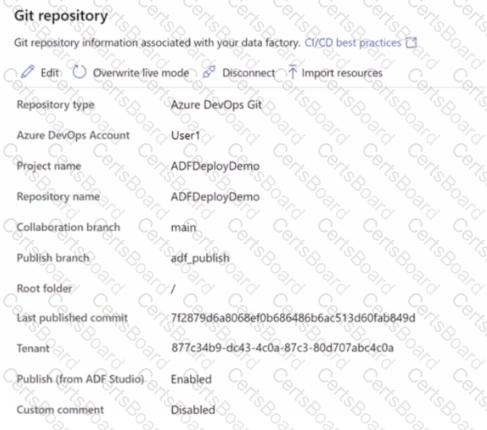
Use the drop-down menus to select the answer choice that completes each statement based upon the information presented in the graphic.
NOTE: Each correct selection is worth one point.

You have an Azure Synapse Analytics dedicated SQL pool.
You need to create a table named FactInternetSales that will be a large fact table in a dimensional model. FactInternetSales will contain 100 million rows and two columns named SalesAmount and OrderQuantity. Queries executed on FactInternetSales will aggregate the values in SalesAmount and OrderQuantity from the last year for a specific product. The solution must minimize the data size and query execution time.
How should you complete the code? To answer, select the appropriate options in the answer area.
NOTE: Each correct selection is worth one point.

You have an Azure SQL database named Database1 and two Azure event hubs named HubA and HubB. The data consumed from each source is shown in the following table.
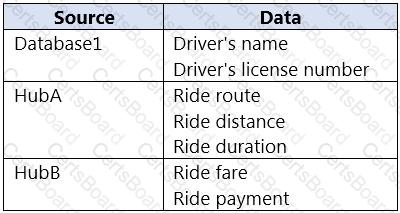
You need to implement Azure Stream Analytics to calculate the average fare per mile by driver.
How should you configure the Stream Analytics input for each source? To answer, select the appropriate options in the answer area.
NOTE: Each correct selection is worth one point.
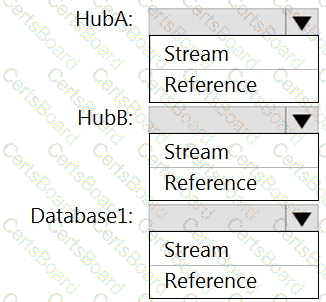
You plan to create a table in an Azure Synapse Analytics dedicated SQL pool.
Data in the table will be retained for five years. Once a year, data that is older than five years will be deleted.
You need to ensure that the data is distributed evenly across partitions. The solution must minimize the amount of time required to delete old data.
How should you complete the Transact-SQL statement? To answer, drag the appropriate values to the correct targets. Each value may be used once, more than once, or not at all. You may need to drag the split bar between panes or scroll to view content.
NOTE: Each correct selection is worth one point.
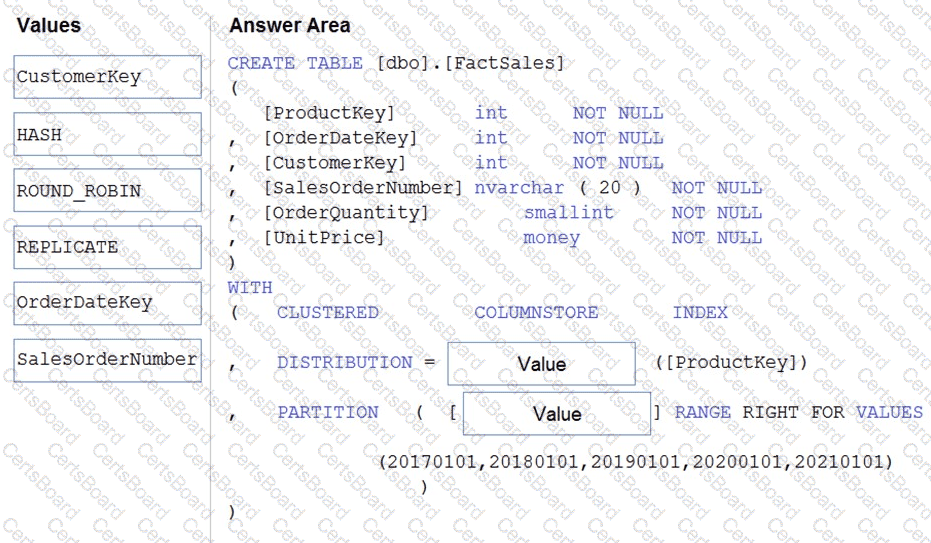
You are implementing an Azure Stream Analytics solution to process event data from devices.
The devices output events when there is a fault and emit a repeat of the event every five seconds until the fault is resolved. The devices output a heartbeat event every five seconds after a previous event if there are no faults present.
A sample of the events is shown in the following table.

You need to calculate the uptime between the faults.
How should you complete the Stream Analytics SQL query? To answer, select the appropriate options in the answer area.
NOTE: Each correct selection is worth one point.
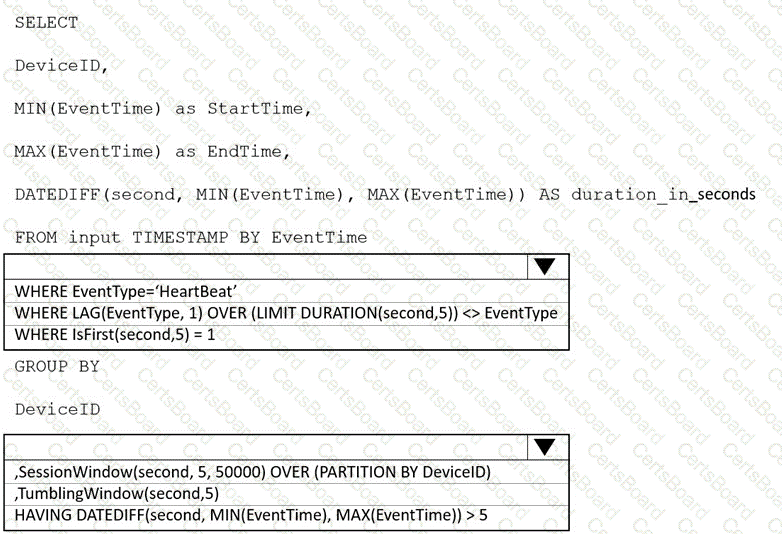
You have an Azure subscription that contains an Azure Synapse Analytics workspace named Workspaces a Log Analytics workspace named Workspace2, and an Azure Data Lake Storage Gen2 container named Container1.
Workspace1 contains an Apache Spark job named Job1 that writes data to Container1. Workspace1 sends diagnostics to Workspace2.
From Synapse Studio, you submit Job1.
What should you use to review the LogQuery output of the job?
You have an Azure data factory that connects to a Microsoft Purview account. The data factory is registered in Microsoft Purview.
You update a Data Factory pipeline.
You need to ensure that the updated lineage is available in Microsoft Purview.
What You have an Azure subscription that contains an Azure SQL database named DB1 and a storage account named storage1. The storage1 account contains a file named File1.txt. File1.txt contains the names of selected tables in DB1.
You need to use an Azure Synapse pipeline to copy data from the selected tables in DB1 to the files in storage1. The solution must meet the following requirements:
• The Copy activity in the pipeline must be parameterized to use the data in File1.txt to identify the source and destination of the copy.
• Copy activities must occur in parallel as often as possible.
Which two pipeline activities should you include in the pipeline? Each correct answer presents part of the solution. NOTE: Each correct selection is worth one point.
You have an Azure Synapse Analytics workspace that contains three pipelines and three triggers named Trigger 1. Trigger2, and Tiigger3.
Trigger 3 has the following definition.
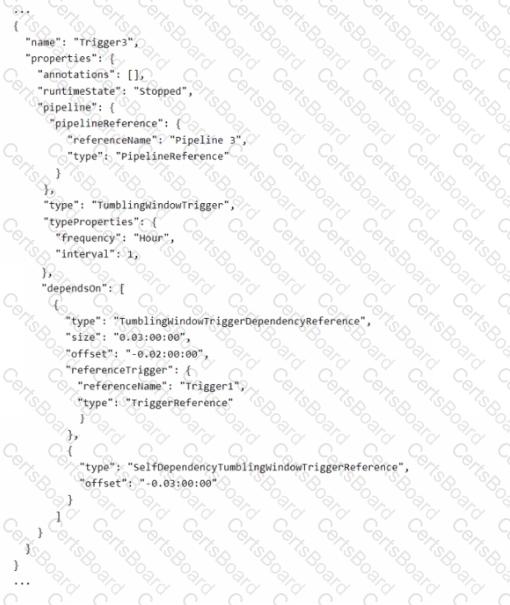

You have an Azure Synapse Analytics workspace named WS1 that contains an Apache Spark pool named Pool1.
You plan to create a database named D61 in Pool1.
You need to ensure that when tables are created in DB1, the tables are available automatically as external tables to the built-in serverless SQL pod.
Which format should you use for the tables in DB1?


